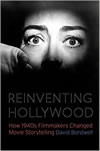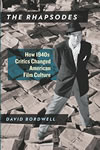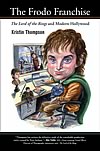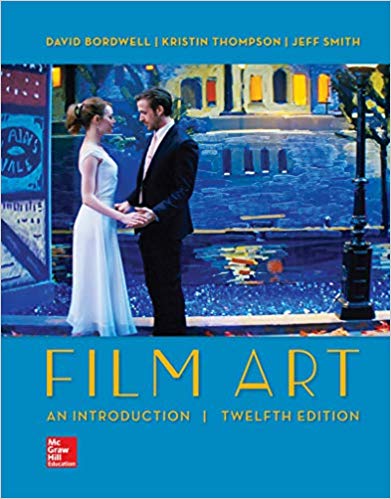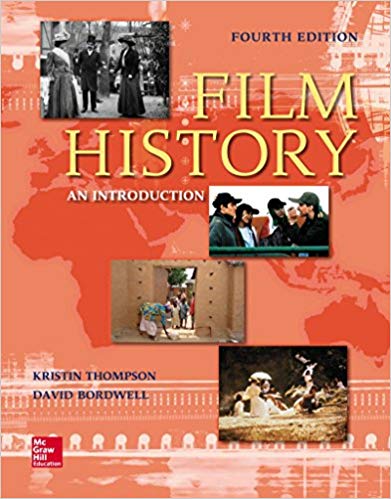Archive for the 'Film industry' Category
Lessons from BABEL
Whatever its faults or virtues, Babel seems to me to typify several trends in current cinema.
1) Network Narratives
Variety‘s critics call them criss-crossers, others call them thread structures or interwoven stories. I call them network narratives. In an essay called “Mutual Friends and Chronologies of Chance,” forthcoming in the book Poetics of Cinema, I tried to lay out the conventions of this increasingly common (maybe too common) storytelling strategy.
The central formal principle is that several protagonists are given more or less the same weight as they participate in intertwining plotlines. Usually these lines affect one another to some degree. The characters might be strangers, slight acquaintances, friends, or kinfolk. The film aims to show a larger pattern underlying their individual trajectories.
Several directors have specialized in this structure, from Altman and Claude Lelouch to Iosseliani and Rodrigo Garcia (most recently, Nine Lives). I found over a hundred such films, some going back quite far (e.g., Grand Hotel) but most made since the 1980s. Do they reflect some social Zeitgeist? Are we seeking connections with one another? Nope, I don’t think so. The most proximate and pertinent causes lie elsewhere. (Where? Check out the book!)
Alejandro González Iñárritu has made the network idea a signature element of his films. The first feature, Amores Perros, used a common convention, the traffic accident, to tie together three characters. We follow their story lines leading up to or away from the car crash. 21 Grams had a smaller cast but a more scrambled structure. Now, with Babel, we have something easier to follow than the previous films. But it compensates by filling a broader canvas: action on several continents, themes heavy with significance about what Pico Iyer calls the Global Soul.
We know how to read criss-crossers now, and so directors can push the boundaries on several fronts–more intricate plotting, portentous themes, spatial distance (critics called Babel an “epic”). Yet to keep audiences on track, filmmakers remain committed to the basic conventions as well, such as the notion of chance as hidden fate, or the Chaos idea that the flapping of a butterfly’s wings in Chile can . . .
Lesson 1: Once a formal tradition gets established, artists compete within that, seeking out ways to innovate…within tested boundaries. Fresh narrative strategies push the filmmaker to balance the novelty with familiarity.
2) Trilogies
The arthouse cinema has long traded on the appeal of a series of films, more or less loosely joined. Satayajit Ray had his Apu trilogy, which was at least about the same character, but at about the same period there was Antonioni’s tryptich L’Avventura, La Notte, and L’Eclisse. Not to be outdone, Bergman gave us two trilogies, one on the crisis of faith (Through a Glass Darkly, Winter Light, and The Silence), the other on, perhaps, the failure of human relationships under pressure (Persona, Shame, and Hour of the Wolf). More recently we’ve had Fassbinder’s BRD trilogy and Kiarostami’s threesome centered on the village of Koker.
Labeling a trio of films a trilogy plays an important role in the festival-arthouse market. Art films often lack established stars and don’t belong to clear-cut genres (though most turn out to be melodramas or historical dramas). The big selling point is usually the director, whose body of work promises something of interest. If the body of work falls into neat periods or groupings, then that automatically creates opportunities for long-term funding and “product differentiation” from film to film. This may seem a crass way to talk about what many people regard as personal expressions of artists, but filmmakers who want to keep making films know that funding and festivals rely on marketable components like the stature of the director and her or his broader creative ambitions.
So it’s not surprising that now directors are explicitly conceiving trilogies. Most of the earlier trilogies I mentioned were created ex post facto, by critics recognizing thematic links among works. It’s not clear that Antonioni or Bergman or Kiarostami planned to make trilogies from the start. Often the idea of a trilogy hits the director after the first film (von Trier’s Dogville) or the second. But now directors can launch a trilogy, as Kieslowski did with Blue. Angelopoulos has announced that The Weeping Meadow is the first film in a trilogy that will survey the troubled history of the twentieth century. Lucas Belvaux took the step of simultaneously making three features centered on one batch of characters, calling the overall result, of course, Trilogy.
On the festival circuit filmmakers have to explain themselves to critics, and Iñárritu has understood this well. He tells us that he decided to create a trilogy while making 21 Grams, and he points out how the films are similar (network structure, overlapping time schemes) and different (degrees of linearity, changes in theme). He helps critics and viewers understand his work–at least, in the way he prefers it to be understood.
Lesson 2: Festival cinema discovered the trilogy before Hollywood did (Star Wars, The Godfather, Pirates of the Caribbean), and the three-movie cluster may well be the art movies’ answer to a franchise.
3) Hyperrefined technique
In The Way Hollywood Tells It, I comment on the tendency of contemporary American filmmakers to develop subtle, maybe unnoticeable patterns of technique that run alongside the film’s story. So the three acts of Ron Howard’s The Paper were planned to employ three different sorts of camera movement. The same tendency can be found in independent filmmaking; Darren Aronofsky’s Requiem for a Dream coordinated its color scheme and seasons to mirror the film’s act structure.
Such refinement is especially tempting in network narratives, in which every line of action can be given its signature look. The obvious example is Soderbergh’s Traffic, which flaunts vivid color and texture differences among the plotlines.
Iñárritu has taken this tactic to a new level of complexity, as revealed in an article in the November American Cinematographer (Rachel K. Bosley, “Forging Connections,” AC 87, 11, 36-49). For this project Iñárritu and his cinematographer Rodrigo Prieto distinguished different story threads through color, grain, film stock, film gauge, lab processing, and even aspect ratio. (They shot the Japanese sequences in anamorphic but then extracted a 1.85:1 frame out of them.) For example we’re supposed to register, albeit unconsciously, a shift when the Morocco story, shot in 16mm shifts to 35mm when the helicopter arrives to rescue the wounded wife.
A harsher critic might claim that the ingenuity expended on these minutiae might better have been spent sharpening and deepening the plotlines themselves. But put evaluation aside. I just want to note that this commitment to “visual arcs” and subliminal tonal shifts echoing the drama shows that Hollywood is as committed to an aesthetic of unity as it ever was–maybe even more committed. This is a level of fanatical detail that supreme fussbudgets like Hitchcock, Sternberg, and (outside Hollywood), Ozu never sought to reach.
I also have to wonder: Does anybody register, let alone notice, such hyperrefinements? In my multiplex, and primed by having read the AC article, I could spot almost none of this finesse on the screen. In the release print I saw, all the stories looked pretty much the same, and most images had the consistency of oatmeal. Prieto says that “the grain was the most important visual element of the story” (p. 42). In this respect, he got his wish; grain was about all I could see.
Lesson 3: Those who think that modern Hollywood has entered a mannerist phase can find confirmation in Babel.

Postscript: It would be worthwhile building a symptomatic interpretation of Babel. My hunch is that despite Iñárritu’s claim that the film is about family and personal communication, something else is going on. After all, the drama is fundamentally about how prosperous white people have to suffer because Asian, Mexican, and North African men have guns.
But that’s a whole other blog.
Flushed away for real?
Kristin here–
Coincidentally, the day before I was planning to see Flushed Away, the latest feature from the brilliant English animation studio, the new Variety arrived with a relevant story. “An Aard-Knock Life,” reveals that “After the second commercial disappointment in as many years from the quirky British claymation studio, insiders say DreamWorks Animation is unlikely to put any more Aardman toons on its sked. Instead, the Blighty company is believed to be looking for a new theatrical partner—likely one that doesn’t have ‘Shrek’-sized expectations for its releases.”
If that happens, maybe Aardman should also make sure that its next studio knows how to sell a movie.
The first “disappointment” for DreamWorks was Wallace & Gromit in the Curse of the Were-Rabbit. That film was so disappointing that it won the 2005 Oscar as best animated feature and was a hit virtually everywhere in the world except the USA.
I’m irresistibly reminded of Disney/Buena Vista’s releases of a few films by Hayao Miyazaki. Not really knowing what to do with these complex, poetic masterpieces, they essentially gave up on the first, Princess Mononoke (American release, 1997), doing almost nothing to publicize it and letting it play to nearly empty theaters in a relatively limited release. Spirited Away (2001) got a lackluster release from Disney, who at least had the decency to make both dubbed and subtitled prints available. Once the movie won the 2002 animated-feature Oscar, the studio gave it a half-hearted re-release. Howl’s Moving Castle (dubbed, 2005) must have gotten most of its business as a result of sterling reviews rather than publicity.
One thing DreamWorks and Disney have in common in these cases: both of them seem not to have noticed that they didn’t make these films. That does matter when you’re trying to find an audience for them.
You could argue that three of the greatest sources of animation, at least theatrical feature-length animation, are Pixar, Aardman, and Studio Ghibli, Miyazaki’s company. (On this level of brilliance, it’s hard to choose among them.) Buena Vista distributes both Pixar and Ghibli films. Pixar films clean up at the box office; Ghibli films pick up rave reviews and awards. (Outside North America they set box-office records.) Distributing Aardman films has been an iffy undertaking for DreamWorks. Chicken Run succeeded, Curse of the Wererabbit didn’t, and, if Variety is right, DreamWorks hopes for no better from Flushed Away.
Why the disparity, when these three studios have walked off with the past four best animated picture Oscars? I’d suggest it’s because Disney and DreamWorks have made no attempt to make their imported films into recognizable brands. They sell them as if they were their own products. Then they wonder why people are mystified when they see “Disney’s” Spirited Away or “DreamWork’s” Flushed Away and find that these films are not what they’re used to from those studios.
Pixar, on the other hand, succeeds in the U.S. partly because it’s a brand. These aren’t Disney films, they’re Pixar films, with the cute little lamp that jumps around in the logo. Even now that Pixar has been bought by Disney, you can bet that the films will go out under the name “Pixar” and have that little lamp.
Disney has never really tried to establish Ghibli as a brand. I think Miyazaki’s films are awkward for the American market. They’e too grown up for the kids who usually go to animated features, too much “cartoons” for adults. Still, given Miyazaki’s reputation—the reviews, the awards, the success in other markets—I suspect Disney could succeed by stressing the Ghibli name and reputation and marketing them as art-house films. They get trampled in the multiplexes.
Similarly, DreamWorks keeps trying to market Aardman films as DreamWorks films. Flushed Away is, according to the ads, “From the creators of Shrek and Madagascar.” If you lure people into the theaters with that claim, of course they’re going to be baffled when they get sophisticated, witty tales instead of broad, obvious comedy. (I enjoyed Shrek, but it’s been considerably overrated. That it rather than Monsters Inc. should have won the first best animated feature Oscar shows why hype and box office can do.)
If DreamWorks instead had made any effort to make Aardman into a brand as recognizable here as in Britain (well, nearly as recognizable), these films would undoubtedly have a bigger success here in the States. Releasing the three Wallace & Gromit shorts as a feature-length program, as was done in Europe, could have won a devoted following for them and things Aardman. Such a release would have cost very little and could have prepared the way for Curse of the Wererabbit and others.
So, back to Flushed Away and its supposed failure. From my reading of the box-office figures over the mere 12 days the film has been in release, it looks like a moderate success. If DreamWorks is ready to write it off already, then Hollywood really has become so focused on opening-weekend grosses as to be blinkered to all other indicators.
As everyone noted, when Flushed Away opened on November 3, it split the family audience with The Santa Clause 3: The Escape Clause. With Borat’s “surprise” success (a surprise only to Twentieth Century Fox and a few pundits), taking in $26 million in 827 theaters and grabbing the Monday infotainment coverage, the Santa Clause came in second at $19, 504,038 and Flushed Away a close third at $18,814,323. After 12 days, those two are still bringing in similar grosses: Santa Clause totaling $42,312,847 and Flushed Away $41,017,254.
But, as I suggested in my piece on Borat, the top three films of the November 3 weekend looked like they would have legs and hold up remarkably well on their second weekend. Sure enough, Santa Clause dropped off a mere 13.2% and Flushed Away only 11.7%. These days, a drop-off of significantly below 50% on the second weekend is considered good. These two drop-offs are very, very low.
If DreamWorks can accept a modest success rather than a Shrek-size result, they may emphasize Flushed Away as a hit, let it play through the holidays, and see what happens when kids are out of school.
DreamWorks also might look at its own history with Aardman. Chicken Run’s opening weekend gross was $17,506,162. (Given inflation, that’s probably comparable to Flushed Away’s opening). Its domestic total was $106,843,564. Not a smash, but good enough to put it twentieth on the box-office chart for that year. Moreover, Chicken Run’s opening weekend was 16.4% of its eventual domestic gross. These days some films take in half their total on the first weekend. Let’s compare it with another long-legged film. The Fellowship of the Ring (a December 2001 release which was still in theaters in August 2002, two weeks after its DVD came out), made 15.1% of its domestic gross during its opening weekend.
Maybe DreamWorks is doing what I suggested not to do: looking on Monday morning at what won the horse race and jumping to conclusions.
So, what did I think of Flushed Away? I thoroughly enjoyed it. I kind of miss the thumbprints you could sometimes spot in the clay of previous Aardman films, but otherwise this first venture into CGI looks very similar. (The studio says they went to CGI in order to make the many water effects seem realistic.) Like the Pixar features and other Aardman films, it has a clear, tight storyline structured around goals, the primary one being that of the hero, a pet mouse, trying to get home after being flushed down the toilet to the sewers.
The world under London’s pavement is dense with the usual clever references and puns and bizarre characters that populate Aardman’s features. More so than usual, in fact: a whole city full of shops, advertisements, and miniature objects that have been put to new uses. In fact, there’s so much to see that I frequently felt the pace was too fast, whipping you past sets before you could do more than glimpse the details. The references to other films, from Finding Nemo to The Two Towers, come thick and fast.
The movie also benefits from the trend of recent years toward all-star vocal casts in animated films. With Hugh Jackman for the hero, Kate Winslet for the heroine, and Ian McKellen for the main villain, the characterizations are wonderful.
And as for the singing chorus of slugs that wanders through the film … well, it has to be seen and heard to be believed. As with other Aardman films, stick around for the credits.
Borat Make Benefit Glorious Multinational of Murdoch
Kristin here–
For some reason, the November 10 issue of Entertainment Weekly ran a story right up front in their “Newsnotes” section as to whether Borat: Cultural Learnings of America for Make Benefit Glorious Nation of Kazakhstan would be a success based on its internet hype. By the time the magazine showed up in our mailbox early the week after the November 3 release, the film had spectacularly won the weekend. Won it despite being in only 837 theaters. Won it with an average $31,607 per screen average for a total weekend haul of $26,455,463. By the way, shortly before the release, Fox actually reduced the number of planned theaters, wary about the film’s dubious chances. (I swear I said at the time, what are they thinking?)
The film predicted by Variety to win the weekend,, The Santa Clause 3: The Escape Clause came in a respectable second on 3,458 screens, averaged $5,640 and totaled $19,504,038. Flushed Away was not far behind, on 3,707 screen, averaging $5,075 and totaling $18,814,323. It seems fairly obvious that the two family-oriented films split that audience, while the considerable non-family-oriented audience had one obvious choice.
This film was hyped to an extent that few $18 million movies are. A clip was posted on YouTube shortly before the release, as the EW article points out, and chat, photos, and reviews filled the internet. EW’s question was this: Would Borat suffer the fate of Snakes on a Plane? That film caused huge amounts of buzz in cyberspace but reaped somewhat disappointing ticket sales for a horror-thriller. The film’s worldwide box-office, $59,377,419 on a reported budget of $33 million, wasn’t great, but it wasn’t disastrous, either. I suspect DVD sales will be much higher and put the film in the black.
The semi-failure of Snakes has led to speculation, as in EW’s article, that maybe the internet isn’t as powerful a means of publicizing films as the studios hoped. Borat’s success demonstrates that we just plain don’t know yet. Probably in some cases, yes, in some cases, no—just as with other forms of publicity. EW assigns grades to films’ trailers. Maybe someday they’ll do the same for internet campaigns.
Sure, Borat was all over the internet, but it was also all over the other media. You had to be living in a lighthouse on Easter Island if you wanted to miss all the PR. Sasha Baron Cohen himself was everywhere, including the sidewalk in front of the White House, promoting the film. He wisely appeared as Borat rather than as himself, giving people beyond his relatively small existing fan base a vivid hint of what they could expect from the film. The hype fed upon itself as the regular print and broadcast media began to treat the film as news precisely because it was becoming ubiquitous—and because the colorful Cohen/Borat made for great infotainment.
Even as I was drafting this entry, boxofficemojo.com posted the estimates for the Friday-night box-office figures. Not surprisingly, the top three films of last weekend look set to become the top three films of this weekend. Borat’s percentage of drop between weekends will probably be pretty low, a sign of a film with good word-of-mouth in addition to hype. “Borat on a Plane?” EW asks. Clearly not.
I’m interested in the relationship between online interest and the success of films. When I say “online interest,” I mostly mean the many fan-created sites and chatroom discussion that range far beyond a studio’s own campaign in cyberspace. In The Frodo Franchise, I’ve got two chapters on the relationship of The Lord of the Rings to the online publicity, from official to highly unofficial. There the internet clearly made a difference and boosted the film’s success, for a variety of reasons. But for other films without a built-in fan base that break out and generate widespread interest in cyberspace—The Blair Witch Project being the most obvious exception—the case is not so clear.
The contrasting cases of Borat and Snakes on a Plane are fascinating, and I’m planning to write more about the subject when the DVD of the latter comes out on January 2 (complete with a “Snakes on a Blog” supplement). I’ll explore why the two met such different fates despite the apparent similarity of the build-up on the internet.
Originality and origin stories
Kristin here–
In the November 6 issue of Newsweek (also online), Devin Gordon comments on the recent trend in franchise series to throw in a prequel covering an earlier period in the main character’s life. “So-called origin stories—how fill-in-the-blank became fill-in-the-blank.”
At first David and I wondered whether Gordon, like so many film journalists, would go for the easy answer. There are at least two easy answers in the context of popular films, and especially blockbuster franchise films. One, their stories reflect something about the current psyche of the nation. Alternatively, they are symptoms of Hollywood running out of creativity and backbone and going for the tried and true.
The public psyche theory may sound profound at first, but it’s basically a quick way to write a story without knowing much of anything about film history or how the film industry works. There may be all sorts of reasons why a given kind of movie is made at a certain time. We all know about genre cycles. But society is vast and multi-faceted, and it isn’t hard to make any given film seem to “reflect” some aspect of it. Might the vogue for origins stories mirror a widespread desire to return to a more innocent era before 9/11? Bingo, you’re got your hook and can make your deadline. (Don’t get me started on the fact that most big films these days are negotiated, greenlit, planned, and in production for years before they appear, thus presumably reflecting not our own Zeitgeist but one that has come and gone.)
As to Hollywood running out of creativity, there are plenty of people in Tinseltown with great scripts and the desire to make them. We’re living in an age, though, when the big studios are owned by conglomerates. More than ever, the studio decision makers and the investors who buy their stocks keep an eye on the bottom line. Variety’s October 23 front-page story, “Less Dream, More Factory,” is on the layoffs and other cost-cutting measures that the big studios face. (By the way, we aren’t putting links to stories in Variety.com, since it’s a subscription-only site.) So the tactics of producers now must be to focus on exploiting the most popular characters and story premises for their tentpole projects.
Gordon recognizes this and puts his finger on a major reason for the vogue for “origin stories.” The studios have to prolong their most lucrative franchises, which are essentially their owners’ big brands. Yet those franchises can grow formulaic. One way to renew their energy can be to leap back in time.
Gordon opines, too, that “Ironically, playing it safe financially also provides studios with the cover to take creative chances.” He points to the fact that Peter Webber, who is directing Young Hannibal, has only the indie hit Girl with a Pearl Earring to his credit. Similarly, art-house darling Christopher Nolan gave one big franchise a new respectability and audience with Batman Begins and will try to continue to do so with The Dark Knight.
Linking origin stories to the hiring of such filmmakers is perhaps a bit of a stretch. The new Bond film, Casino Royale, the earliest in the order of Ian Fleming’s original novels, shows a younger agent. Much of the flashier high-tech props of recent entries in the series are apparently gone, with a grittier feel to the film. Yet it was directed by Martin Campbell, who also had made an earlier entry, GoldenEye, as well as both the Zorro films.
It’s true that recently Hollywood studios have shown a strange propensity to hire independent or foreign directors to helm entries in franchises. In the wake of his hit Once Were Warriors, New Zealand’s Lee Tamahori was imported and made Die Another Day and xXx: State of the Union. Warner Bros. brought in Mexican director Alfonso Cuarón (Y tu mamá también) to make the third Harry Potter film, presumably because many critics had dubbed the first two, by Chris Colombus, too bland. Perhaps the studios simply see franchises as needing shaking up at intervals. Yet this is part of a larger trend of indie directors suddenly boosted to blockbuster assignments, as when Doug Liman went from Go to The Bourne Identity and Mr. and Mrs. Smith.
An “origin story” in the sense that Gordon is using the phrase is a type of prequel that jumps back far enough to show the protagonist distinctly younger and different from the way he is in the original film or series. It then explains how he changed into that protagonist.
Hong Kong filmmakers are adept at prequels of this sort. God of Gamblers: The Early Years, shows us the source of the protagonist’s lucky ring and his taste for gold-wrapped chocolate, both of which are major motifs in the original God of Gamblers. The case of A Better Tomorrow is more complicated. John Woo and Tsui Hark had intended it to be a stand-alone film, and they made the mistake of killing off the most charismatic character. The film was such a hit, largely on the basis of Chow Yun Fat’s performance as Mark, that A Better Tomorrow II gave Mark a twin brother, Ken, and put Chow back in action. That film’s success led to a prequel to the first film. A Better Tomorrow III traces how the Mark character acquired his fighting skills and his signature costume and habits.
Origin stories are not entirely new to Hollywood, either. As far back as 1974, The Godfather Part II wove in flashbacks to a time well before the first film’s action, tracing Don Corleone’s rise. In 1979, there was Butch and Sundance: The Early Days.
Origin stories can be thought of as expansions of a basic convention of mainstream storytelling: the flashback to crucial formative moments in a character’s life. In that sense, perhaps the quintessential origin story is Citizen Kane. Today, when everything is potentially franchisable, such an early-days sequence can create a series. The prologue of Indiana Jones and the Last Crusade shows young Jones launching upon an adventure that prefigures the man he will become. (In what surely is an inside joke, River Phoenix even acquires Harrison Ford’s chin scar.) That sequence in turn spawned The Chronicles of Young Indiana Jones TV series (“Before the world discovered Indiana, Indiana discovered the world”) and four cable movies.
As a term, “origin stories” was coined by students of mythology, who use it to refer to various ethnic groups’ accounts of the origin of the world. In that case, it didn’t have anything to do with what we now call prequels.
Then the term got taken up in discussions of comic books to identify the sort of thing that Gordon is talking about. Before television, comic books were the ultimate franchise form of the twentieth century. In comic franchises, particularly those centering on superheroes, a book or short series of books might be devoted to an origin story. (Dave Carter’s blog has a lengthy entry on comic-book origin stories, giving examples.) It’s not surprising that one of the main origin films, Batman Begins, came from the comics.
Gordon does not mention another reason why studios might want to continue a franchise by jumping back to the hero’s origins: actors can age too much to continue a role. It’s been over 14 years since The Silence of the Lambs, and Anthony Hopkins could probably not be convincing in another turn as Lecter. Possibly we’ll get a chance to see whether a 60-something (or 70-something at the rate things are going) Harrison Ford can bring audiences in for the on-again-off-again Indiana Jones continuation. Or actors may exit the franchise, as Jody Foster did before Hannibal. Or grow up too quickly, as the Harry Potter kids are doing before our eyes. Or die, as Richard Harris did in the same series, forcing Warners to substitute Michael Gambon as Dumbledore.
But origin stories don’t have these problems. Just get new actors. One thing tentpole franchise films have taught us is that, as strongly identified with a character as a star may become, if the character and premises are even stronger, a new actor will be accepted. It’s happened with Batman, Superman, Bond, and almost did—and could yet–with Spider-Man.
Such stories, however, have their dangers as well. If the audience is devoted to the character as he (and it’s mostly he so far) is, will they care about seeing him as a very different person? If Hannibal Lecter is the middle-aged psychopath we love to hate, do we want to learn that he was once a vulnerable, suffering youth?




